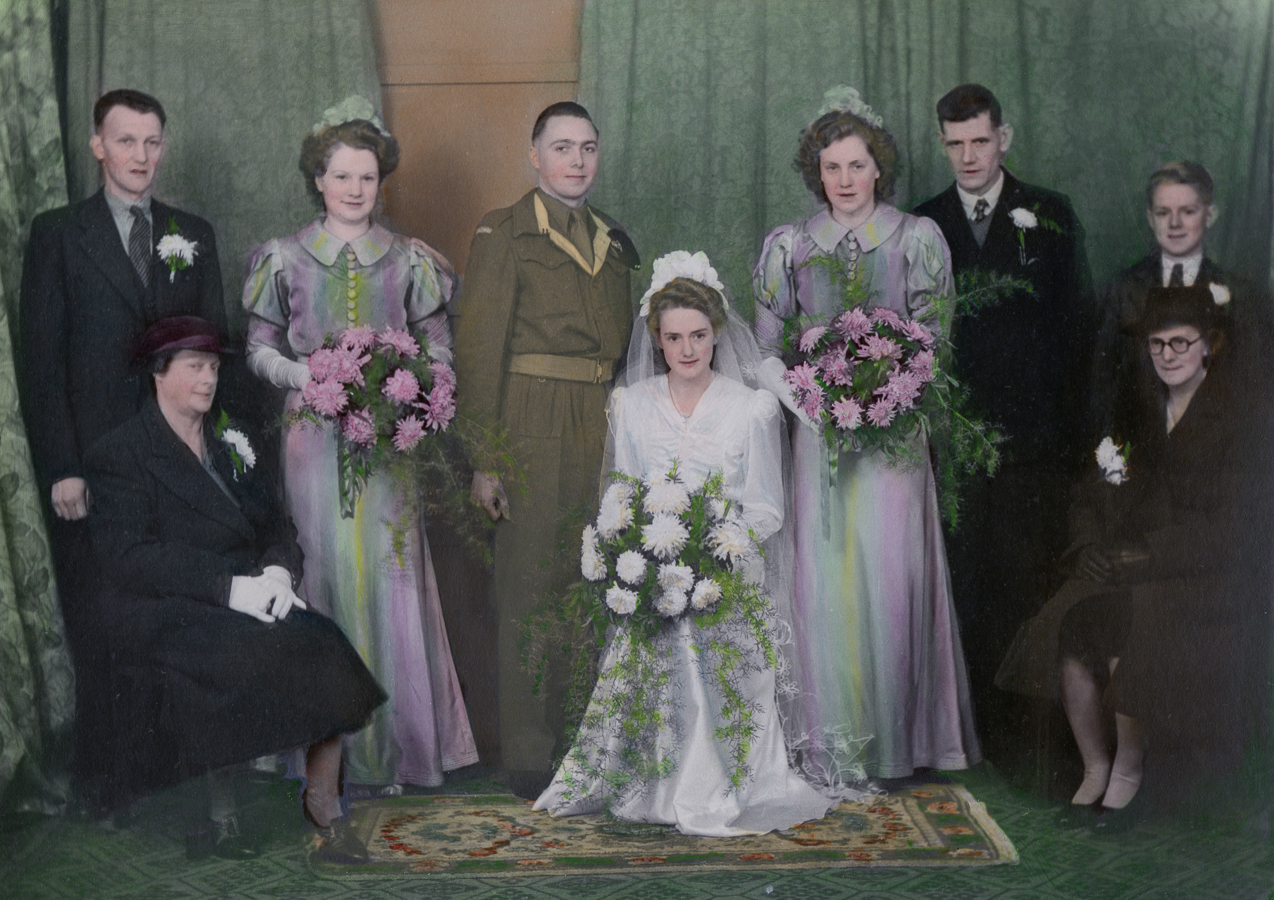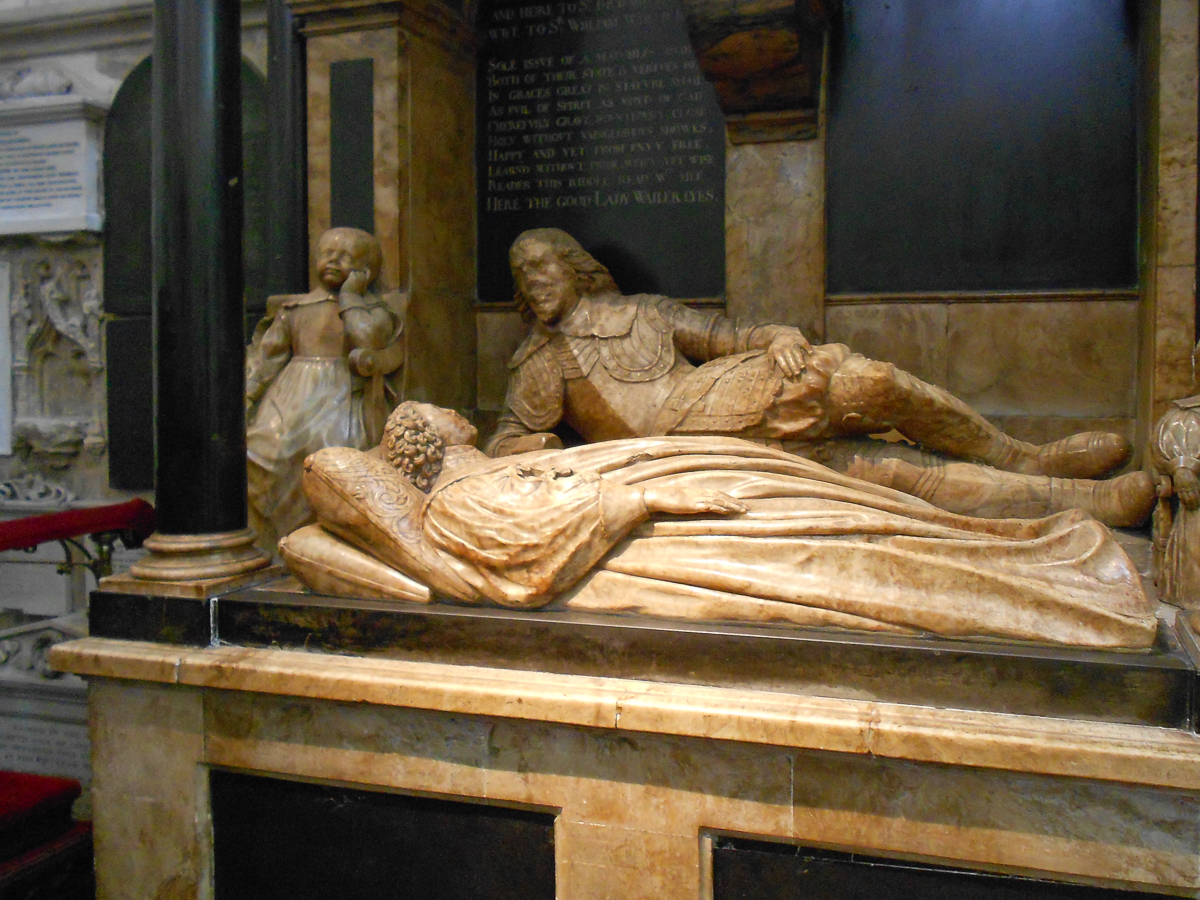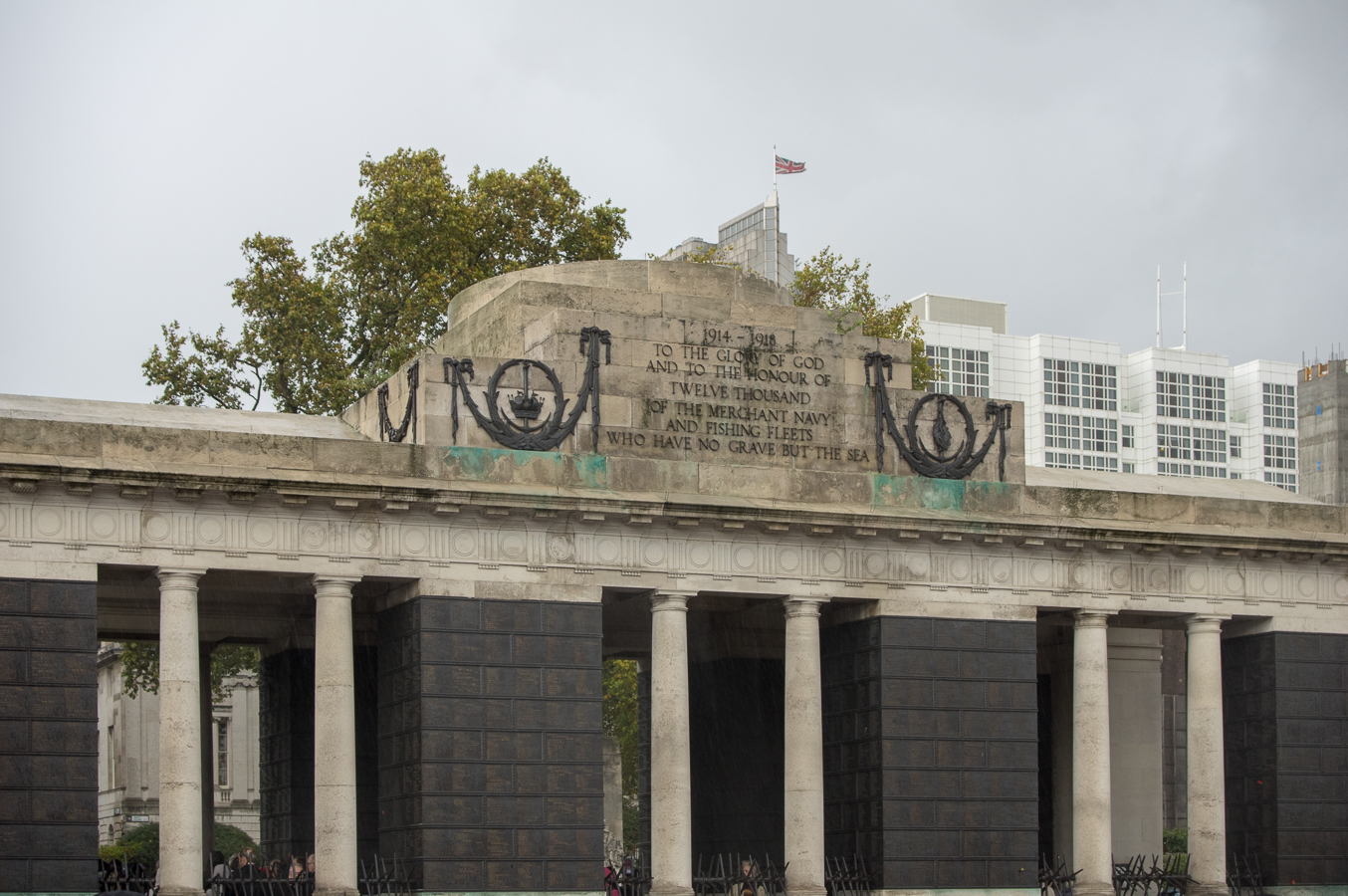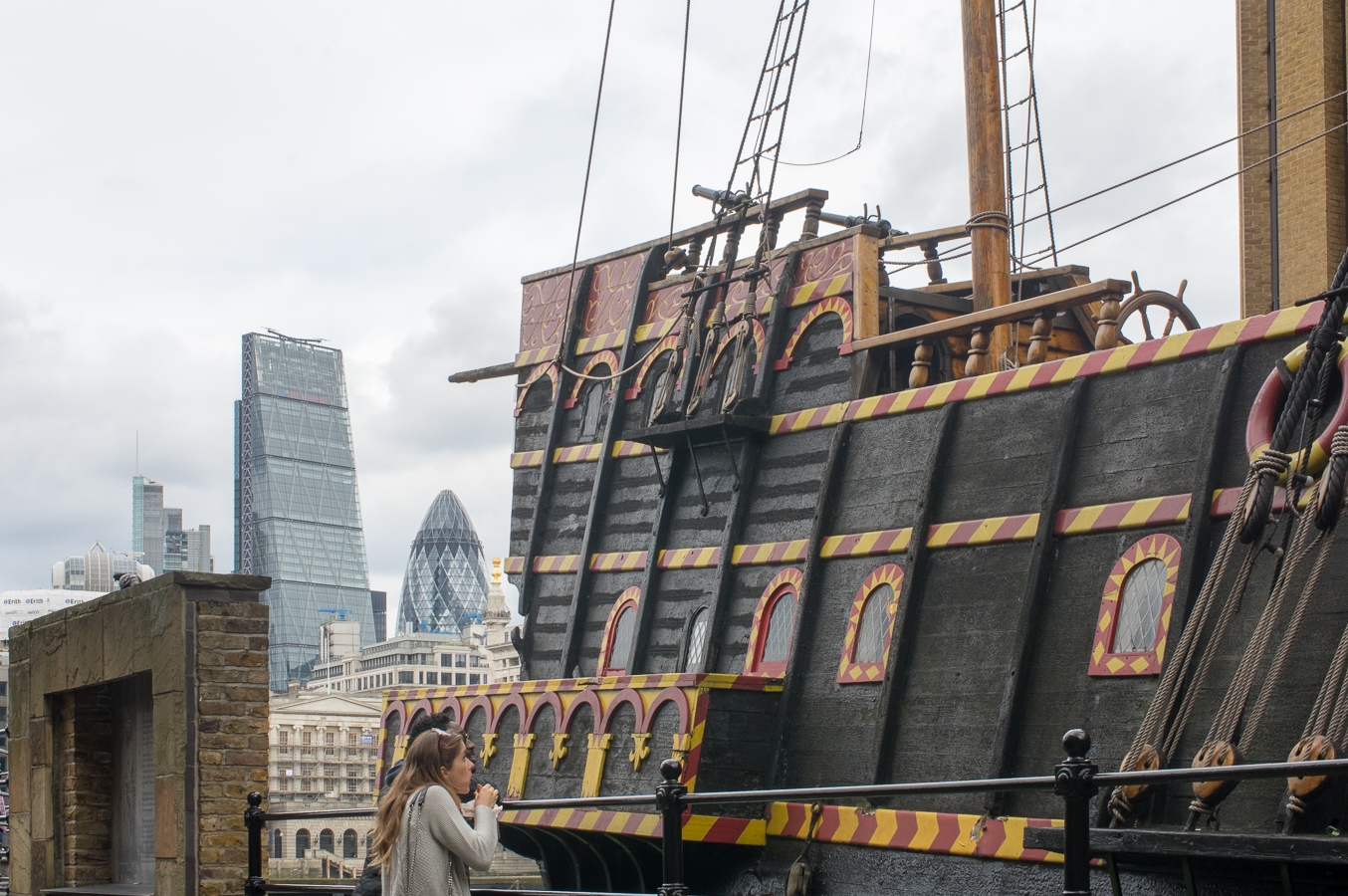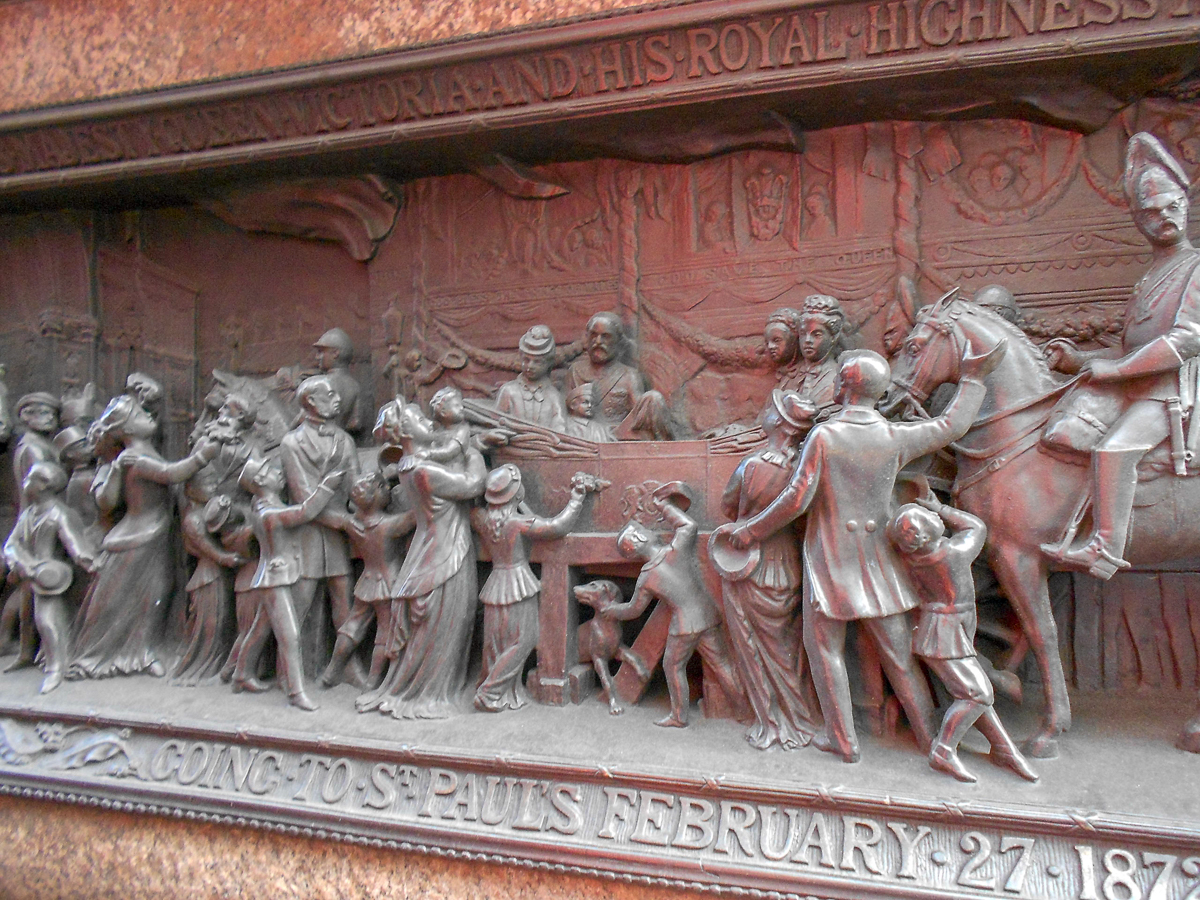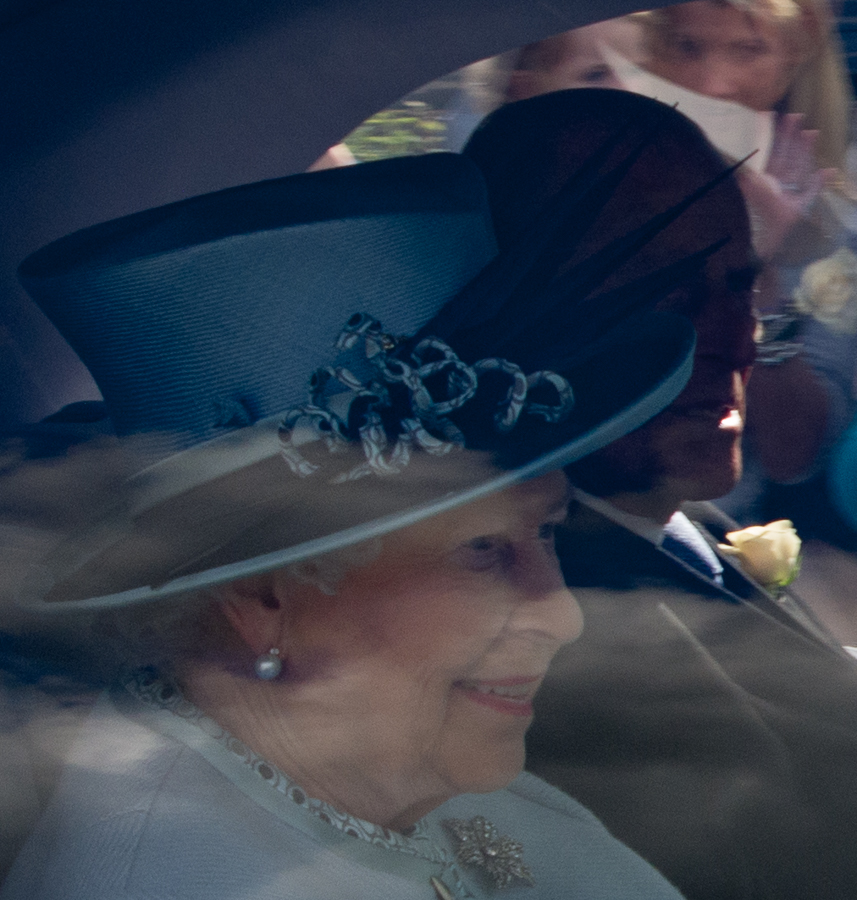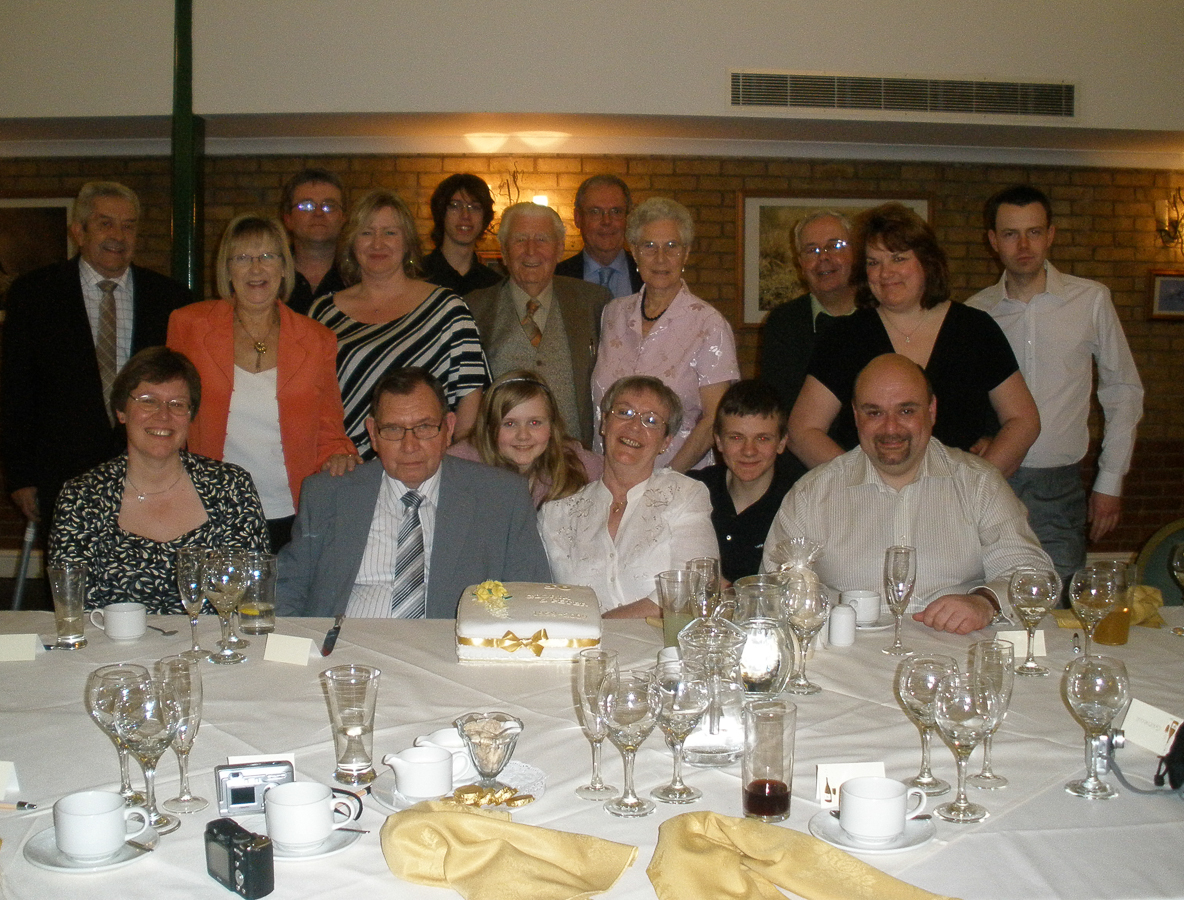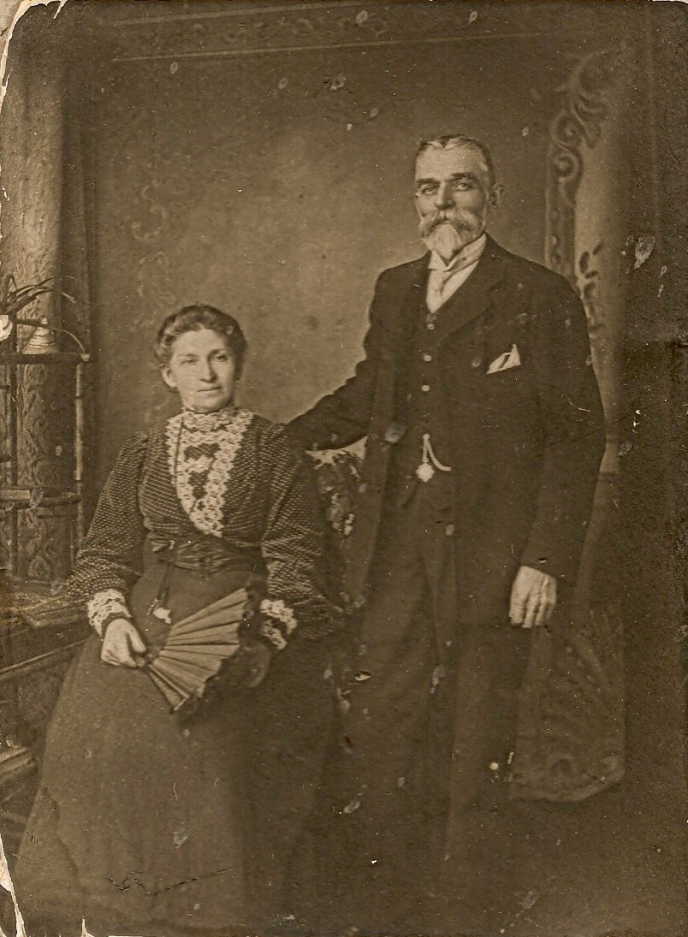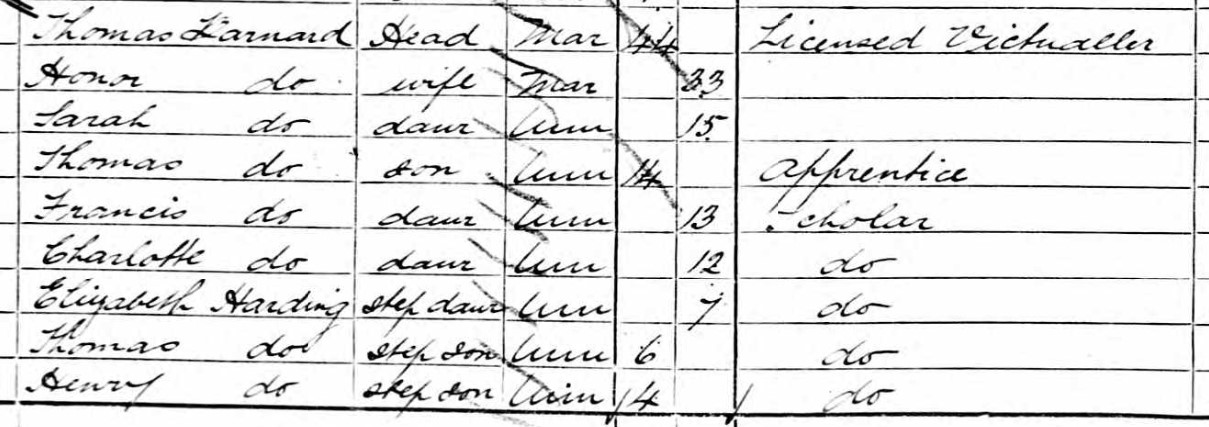Angevin empire and the Count of Anjou and Duchy of Aquitaine
Pepin or Pippin the Short First King of the Franks of the Carolingian dynasty. First King of the Franks. That is something.
He was also, according to my family tree on Ancestry, my 15th great-grandfather of wife of husband of 3rd cousin 25x removed. Born 715 in Austrasia, France and died 18 September 768 at St Denis, Paris, Ile-de-France, France.
Pepin the Short grandfather was Pepin II De Heristal, Mayor Of The Palace. He was born in 635 in Liège, Liege, Belgium.
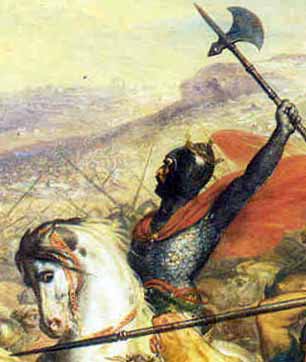 Pepin the Short's father, was Charles Martel.
Pepin the Short's father, was Charles Martel.
The Angevin Empire
The Angevin Empire (French: Empire Plantagenêt) describes the possessions of the Angevin kings of England who held lands in England and France during the 12th and 13th centuries. Its rulers were Henry II (ruled 1154–1189), Richard I (r. 1189–1199), and John (r. 1199–1216). The Angevin Empire is an early example of a composite state.
The Angevins of the House of Plantagenet ruled over an area covering roughly half of France, all of England, and parts of Ireland and Wales, and had further influence over much of the remaining British Isles. The empire was established by Henry II, as King of England, Duke of Normandy, Count of Anjou (from which the Angevins derive their name), as well as Duke of Aquitaine by right of his wife, and multiple subsidiary titles. Although their title of highest rank came from the Kingdom of England, the Angevins held court primarily on the continent at Angers in Anjou, and Chinon in Touraine.
At its largest extent, the Angevin Empire consisted of the Kingdom of England, the Lordship of Ireland, the duchies of Normandy (which included the Channel Islands), Gascony and Aquitaine as well as of the counties of Anjou, Poitou, Maine, Touraine, Saintonge, La Marche, Périgord, Limousin, Nantes and Quercy. While the duchies and counties were held with various levels of vassalage to the king of France, the Plantagenets held various levels of control over the Duchies of Brittany and Cornwall, the Welsh princedoms, the county of Toulouse, and the Kingdom of Scotland, although those regions were not formal parts of the empire. Auvergne was also in the empire for part of the reigns of Henry II and Richard, in their capacity as dukes of Aquitaine. Henry II and Richard I pushed further claims over the County of Berry but these were not completely fulfilled and the county was lost completely by the time of the accession of John in 1199.
You can see that I have started a lot further back in time to start this article.
Forward
This is not an attempt to re-write history as I have no new facts, nor have I won any wars to entitle me so to do, 'History is written by the victors'. There are plenty of scholars out there that know a lot more about the subject than I ever will. It is nowhere near detailed enough to be considered in depth, and most of the information is lifted from other sources. (in italics), mainly Wikipedia. Links to the sources are generally provided.
This is a romp through the Middle Ages from the perspective of my family's involvement, or more correctly people on my Family Tree, ancestors and relatives and the like. It is an attempt to understand a complex interaction of politics and power, lands and titles, marriages and murders, interlaced with references to my Family Tree connection (in orange). Primarily, it is to help me understand it, and clarify my Family Tree. A history lesson and genealogy mixed together if you will. With that in mind I thought I would share these ramblings with you.
My earliest direct ancestor is Roger Chievre La Maniche, 990–1078, Birth 990 • Saint Sauveur De La Pommeraye, La Manche, Normandy, France, Death 1078. He was my 29th great-grandfather. He was the father of the two brothers, Guillaume (William) Chievre or La Chevre and Raoul (Ralf or Ralph) de la Pommeraie.
However, all of this is predicated on a questionable link. In fact the whole of my Middle Ages or medieval period relatives revolve around two fairly questionably links. The first one found was
Roger De Mortimer 3rd Baron Mortimer, 1st Earl of March, who was born on 25 Apr 1287 at Wigmore Castle, Ludlow, Hertfordshire, England and was executed on 29 Nov 1330 at Tyburn, London, England. He is alleged to have had an affair with Isabella Capet de France, who was born between 1 January 1292 and 17 March 1292 at Castle Rising, Paris, Ile-de-France, France, and died 22 August 1358 at Hertford Castle, Hertfordshire, England. Isabella was married to Edward II, King of England at the time.
Allegedly, the illegitimate issue of the affair was William Alfred Willielmo Mortimer Knight, born about 1330 at Worcestershire, England and died 1360 somewhere in England.
There are thousands of people on Ancestry that have used this connection. However, that in itself does not make it so. There has also been much discussion and research on the subject, with some tracking the movements of everybody, and concluding that they could not have had an affair due to lack of proximity and opportunity. Kings and queens appear to have relatively well documented itineraries and diaries even back then.
Without this link the royal connection does not work.
That is until another dubious link came to the fore.
For years, the Pomeroy Family Tree researchers have thought there was a link between the Norman Pomeroy's and the more later, or modern branches.
Starting with William I "The Conqueror" of England, Born on 14 October 1024 at Falaise, Calvados, Basse-Normandie, France and died on 9 September 1087 at Rouen, Seine-Maritime, Haute-Normandie, France. Also know as William the "Bastard" in Normandy before the invasion. With William, apart from an army, there were several courtiers who came across the Channel with him. Some of whom were rewarded with lands in England. One such supporter was Radulphus De La Pommeraie, (Ralph) born 1044 at Saint Sauveur De La Pommeraye, La Manche, Normandy, France and died 1100 at Lidefort, Devon, England. From Ralph there appears to be a Pomeroy line until William Pomeroy who was born in 1545 at Netherbury, Dorset, England and died 03 July 1595 Crewkerne, Somerset, England. After that it is difficult to trace the family link for a couple of generations. However, the Pomeroy Family Association chairperson suggested that the missing link was William's son, John Wrickson, (not Pomeroy), born about 1575 at Symondsbury, Dorset, England who died in the year 1599, presumably somewhere in England, John Wrickson had a son, Henry Wrickson, who was born on 24 July 1596 at Symondsbury, Dorset, England, and died 1663. His son was another William Pomeroy. I don't know why the change of name appeared, or the reversion back to Pomeroy. I understand the adoption of this solution to filling the missing gap did cause a rift between the founder of the Pomeroy Family Association and the current Chair. Hopefully more evidence will come to light to substantiate (or repudiate) this claim.
In the meantime it remains a dubious link, but is the foundation of this article, with the assumption that it is correct.
The Norman Pomeroy Family
From Ancestry - Posted 16 Apr 2012 by Glynis Sakowicz
Following the Invasion and Conquest of England by William the Conqueror the lands of the English were granted to the Companions of the Conqueror. In A.D. 1068 the rich lands of southwestern England fell to the Normans. Among the Companions of the Conqueror who shared in the spoils were two brothers who had come in with the Conquest. They were granted lands in Devon and were founders of two extant families. Their names are recorded on the bronze tablet of the ancient church at Dives, Normandy, which bears the names of some of the known Companions of the Conqueror who embarked from Dives. They were Guillaume (William) Chievre or La Chevre and Raoul (Ralf or Ralph) de la Pommeraie.
William received the Honour of Bradninch and his brother Ralph the Honour of Berry Pommeraie, both in Devonshire. William's descendants were known variously as Chevre, Chever, Chevyr, Chevyrs, Chevers Chivers and Cheevers etc. The form .Chevers. is derived from the original Norman .Chievre. through a variation of the original, viz .Cheever. . The .s. comes from the apostrophes of Chever’s son., i.e son of Chever.
Ralph.s descendants were known variously as de La Pommeraie, de Pomerio, de la Pomerai, Pomaria, and Pomeroy etc. The form Pomeroy is derived from the original .Pommeraie. and is probably a straight Anglicisation of the name.The English descendants of Ralph are known today as Pomeroy and include the peerage Pomeroys, the Viscounts Harberton.
Ralph’s surname was derived from la Pommeraie, i.e., -the Orchard- at the family's place of residence at la Pommeraye, 14 kilometres west of Falaise, Calvados, Normandy. The designation .de la Pommerair. was probably applied to Ralph for the purpose of identification only. From a geographical significance it became a surname and later part of the compound place name Berry Pomeroy. (The Crests and Arms of some branches of the Pomeroy family show a rampant lion holding between the paws an apple. The connection between the apple and the Orchard is obvious.
Both brothers are recorded in Domesday Book as tenants-in-chief of the Crown. Domesday Book having been written in Latin William’s surname is recorded as “Capra” and Ralph is recorded as ”Pomaria”. He is also recorded in addition to his direct holdings from the Crown as a sub-tenant of his brother William.
With no similarity in the names of William’s and Ralph’s descendants and no similarity in their arms and crests, it would appear that there was no connection between the two families; yet despite the difference in surnames etc. the descendants of William Capra or Chievre and Ralph Pomaria or Pomeroy are members of the SAME family.
Nothing was known of the pre-Conquest ancestry of the family.
In the Victoria County History of Devonshire William is listed as William Capra with the note that he is recorded as Chievre in the Exchequer Book. An interesting footnote to the article relating to William stated that he was the brother of Ralf de Pomeroy. Mention is also made of his sister Beatrix (Beatrice) who was one of his sub-tenants. In supplement V11 of the Devonshire Association Transactions she is described as William's sister and like her brother she is surnamed Capra.
My great satisfaction in identifying a brother (Ralf) and a sister (Beatrice) of my family’s first recorded ancestor in England prompted me to endeavour to trace my family back beyond William.
The Cheevers family had not been traced beyond William Chievre but it seemed possible that the records of the Pomeroy branch of the family might provide additional information regarding the family’s ancestry. William and Ralf being brothers, the ancestry of one brother would naturally apply to the other. Unfortunately the peerage works I consulted did not trace the Pomeroy family back beyond “Ralph de la Pomeria”, founder of the Devon and Cornwall branches of the Pomeroy family and ancestors of the Viscounts Harberton.
In the History and Genealogy of the Pomeroy Family, Vols.1 & 11 published in 1912 and Part 111 in 1922, the author Colonel Albert A. Pomeroy traces the family back to Radulphus De La Pommeraie, the ancestor of the Pomeroy’s in England. Brief mention of Ralph’s brother William is found in Vol.1 and Part 111 where he is designated as “Capra”, “Chevre” and “Chievre”. Another Brother “Huge”, and their sister “Beatrice” are also mentioned. Most interesting of all is the tantalizingly brief mention of the father of William and Ralph - Roger- who is described by Colonel Pomeroy as being recorded, with his son William Capra, as a benefactor to the Abbey of St.Mary Du Val, Normandy. The Colonel refers in a note to page 536 of the “Calendar of Documents, France” as the Documentary source of this statement. At least three times in his work Colonel Pomeroy refers to Roger, as not having a surname, but consultation of the Calendar of Documents preserved in France illustrative of the history of Great Britain and Ireland., page 536, Vol.1, A.D. 918-1206, reveals two glaring omissions by Colonel Pomeroy. Although the “Calendar of Documents, France” does not record Roger’s gift to the Abbey in full, but merely mentions it in parenthesis, I discovered that Roger did indeed have a surname and I also learned the name of his wife; two very important details in the history of both families which were either overlooked or ignored by Colonel Pomeroy.
The “Calendar of Documents, France’ describes Roger as ROGER CAPRA,and gives his wife’s name as Petronilla. The Rev. J.R. O’Donnell of the Pontifical Institute of Medieval Studies, Toronto, Canada, has translated a
transcript of the document mentioned in the Calendar as follows:
“I Roger Chievre (becomes Chevers in English from the Norman form) have, with the consent of my wife Petronilla and my son William, given to God and the Church of St. Mary of the Valley 20 acres of land at Cauville (about 22 acres today; Cauville is approximately 9 miles from Le Havre) and in Delbot’s mill about 10 sesters of grist and six sesters of wheat for my soul and the souls of my forefathers.”
In the Latin records of Normandy Roger the ancestor of the Chevers and Pomeroy families, is described as “Capra” and his son William and daughter Beatrice are both described in English (Norman) Latin records as “Capra.” From the fact that the Chievre surname was used by Roger and his son William and daughter Beatrice, it may be concluded that the English Pomeroys would have borne the same surname had not Ralph and his descendants
been known as of “the Orchard.”
From the History and Genealogy of the Pomeroy Family we learn that Beatrice was sub-tenant of her brothers William and Ralph. Following the Conquest she was Abbess of the Benedictine Abbey of St. Michael’s Mount, Cornwall. This association with St. Michael’s Mount by the Chievre branch of the family was followed about a century later by an interesting association with the Mount by the Pomeroy branch of the family. One of Beatrice’s Pomeroy kinsmen, one Henry de Pomeroy, was a staunch supporter of Prince John against his brother King Richard I. Henry Pomeroy was forced to flee to St. Michael’s Mount where he held out until capture was inevitable. St.Michael’s Mount then became the scene of a most unusual suicide. Rather than face capture and death at the hands of the executioner and subsequent confiscation of his estates Henry called in his surgeon and had himself bled to death.
Both the Irish Cheevers and the English Pomeroy branches of the families attained Peerage honours. In Ireland Edward Cheevers the Head of the family, was raised to the Peerage as Viscount Mount Leinster and Baron of Bannow, 23 August 1689,by James II. Lord Mount Leinster served as A.D.C. to his Majesty at the Battle of the Boyne and accompanied the King into exile to France where his Lordship died in 1709.
In England Arthur Pomeroy was elevated to the Peerage as Baron Harberton, 10 October 1783, and was advanced to a Viscouncy, 5 July, 1791.
The Viscounts Harberton descend from the Pomeroys of Ingesdon (now Ilsington), Devon. Both family surnames, Chevers and Pomeroy, have survived down through the centuries as place names. In Devon the name Pomeroy has been perpetuated by the village and castle of Berry Pomeroy. In Ireland the name Cheevers has been perpetuated by the Townland of Cheeverstown, Co.Dublin and Cheeverstown Castle. The Down survey map of the Barony of Uppercross, 1655, the Census of Ireland, 1659 and the Book of Survey and Distribution (date about 1660) all give the old form of .Ballycheevers..
Some branches of both families can claim royal descent. The Pomeroy royal descent is somewhat circumstantial, according to one source Goslin, son of Ralph Pomeroy, married a natural daughter of King Henry 1 named Rohais. Still Another source states that Goslin's wife Emma .appears. to have been one of the natural daughters of Henry 1.
The Chevers royal descent is traced from the marriage of Sir Walter Chevers, of Ballyhealy, Co.Wexford, and Lady Eleanor St. Lawrence, daughter of Nicholas St. Lawrence, 16th Baron of Howth, and a direct descendant of King Edward III. Lady Eleanor possessed a double descent from King Edward I by virtue of her descent from John of Gaunt, son of Edward III and great-grandson of Edward I, and by descent from Edmund, Earl of Kent, son of Edward I.
Descent can be traced by the two families not only from two Companions of the Conqueror, but by virtue of their royal descent, from the Conqueror himself.
The rise of the Franks
The Merovingian dynasty Merovingian dynasty -- By English wiki user Rudric, CC BY-SA 3.0, https://commons.wikimedia.org/w/index.php?curid=5748524 was the ruling family of the Franks from the middle of the 5th century until 751. They first appear as "Kings of the Franks" in the Roman army of northern Gaul. By 509 they had united all the Franks and northern Gaulish Romans under their rule. They conquered most of Gaul, defeating the Visigoths (507) and the Burgundians (534), and also extended their rule into Raetia (537). In Germania, the Alemanni, Bavarii and Saxons accepted their lordship. The Merovingian realm was the largest and most powerful of the states of western Europe following the breaking up of the empire of Theodoric the Great.
Merovingian dynasty -- By English wiki user Rudric, CC BY-SA 3.0, https://commons.wikimedia.org/w/index.php?curid=5748524 was the ruling family of the Franks from the middle of the 5th century until 751. They first appear as "Kings of the Franks" in the Roman army of northern Gaul. By 509 they had united all the Franks and northern Gaulish Romans under their rule. They conquered most of Gaul, defeating the Visigoths (507) and the Burgundians (534), and also extended their rule into Raetia (537). In Germania, the Alemanni, Bavarii and Saxons accepted their lordship. The Merovingian realm was the largest and most powerful of the states of western Europe following the breaking up of the empire of Theodoric the Great.
The dynastic name, medieval Latin Merovingi or Merohingii ("sons of Merovech"), derives from an unattested Frankish form, akin to the attested Old English Merewīowing, with the final -ing being a typical Germanic patronymic suffix. The name derives from King Merovech, whom many legends surround. Unlike the Anglo-Saxon royal genealogies, the Merovingians never claimed descent from a god, nor is there evidence that they were regarded as sacred.
The Merovingians' long hair distinguished them among the Franks, who commonly cut their hair short. Contemporaries sometimes referred to them as the "long-haired kings" (Latin reges criniti). A Merovingian whose hair was cut could not rule, and a rival could be removed from the succession by being tonsured and sent to a monastery. The Merovingians also used a distinct name stock. One of their names, Clovis, evolved into Louis and remained common among French royalty down to the 19th century.
The first known Merovingian king was Childeric I (died 481). His son Clovis I (died 511) converted to Christianity, united the Franks and conquered most of Gaul. The Merovingians treated their kingdom as single yet divisible. Clovis's four sons divided the kingdom between them and it remained divided—with the exception of four short periods (558–61, 613–23, 629–34, 673–75)—down to 679. After that it was only divided again once (717–18). The main divisions of the kingdom were Austrasia, Neustria, Burgundy and Aquitaine.
During the final century of Merovingian rule, the kings were increasingly pushed into a ceremonial role. Actual power was increasingly in the hands of the mayor of the palace, the highest-ranking official under the king. In 656, the mayor Grimoald I tried to place his son Childebert on the throne in Austrasia. Grimoald was arrested and executed, but his son ruled until 662, when the Merovingian dynasty was restored. When King Theuderic IV died in 737, the mayor Charles Martel continued to rule the kingdoms without a king until his death in 741. The dynasty was restored again in 743, but in 751 Charles's son, Pepin the Short, deposed the last king, Childeric III, and had himself crowned, inaugurating the Carolingian dynasty.
 The aforesaid Pepin II De Heristal, grandfather of Pepin the Short, was Mayor Of The Palace of Austrasia.
The aforesaid Pepin II De Heristal, grandfather of Pepin the Short, was Mayor Of The Palace of Austrasia.
Under the Merovingian dynasty, the mayor of the palace (Latin: maior palatii) or (maior domus) was the manager of the household of the Frankish king.
During the second half of the seventh century, the office evolved into the "power behind the throne". At that time the mayor of the palace held and wielded the real and effective power to make decisions affecting the kingdom, while the kings were increasingly reduced to performing merely ceremonial functions, which made them little more than figureheads (rois fainéants, "do-nothing kings"). The office may be compared to that of the peshwa, shōgun, sarvadhikari or prime minister, all of which have similarly been the real powers behind some ceremonial monarchs.
In 687, after victory over the western kingdom of Neustria, the Austrasian mayor, Pippin of Herstal, took the title Duke of the Franks to signify his augmented rule. His son and successor, Charles Martel, ruled without elevating a new king during the last four years of his reign (737-741). His sons Carloman and Pepin the Younger (Pepin the Short) elevated another Merovingian king, Childeric III, but he was eventually deposed in 751 by Pepin, who was crowned king in his place.
Charles Martel, The Hammer, build on his father's legacy, conquered more lands, and ruled without a king for a while. The family completed the rise to power when Pepin the Short was crowned King of the Franks in 751.
Carolingian dynasty
Carloman (between 706 and 716 – 17 August 754) was the eldest son of Charles Martel, majordomo or mayor of the palace and duke of the Franks, and his wife Chrotrud of Treves. On Charles's death (741), Carloman and his brother Pepin the Short succeeded to their father's legal positions, Carloman in Austrasia, and Pepin in Neustria. He was a member of the family later called the Carolingians and it can be argued that he was instrumental in consolidating their power at the expense of the ruling Merovingian kings of the Franks. He withdrew from public life in 747 to take up the monastic habit, "the first of a new type of saintly king," according to Norman Cantor, "more interested in religious devotion than royal power, who frequently appeared in the following three centuries and who was an indication of the growing impact of Christian piety on Germanic society".
In 678, Neustria, under Mayor Ebroin, subdued the Austrasians for the last time. Ebroin was murdered in 680. In 687, Pippin of Herstal, mayor of the palace of the King of Austrasia, defeated the Neustrians at Tertry. Neustria's mayor Berchar was assassinated shortly afterwards and following a marriage alliance between Pippin's son Drogo and Berthal's widow, Pippin became mayor of the Neustrian palace.
Pippin's descendants, the Carolingians, continued to rule the two realms as mayors. With Pope Stephen II's blessing, after 751 the Carolingian Pippin the Short, formally deposed the Merovingians and took control of the empire, he and his descendants ruling as kings.
Neustria, Austrasia, and Burgundy then became united under one authority and, although it would split once again into various eastern and western divisions, the names "Neustria" and "Austrasia" gradually disappeared.
An alternative story about Pepin II De Heristal found on Ancestry and submitted by
pin (also Pippin, Pipin, or Peppin) of Herstal, or Heristal, (635/45 – 16 December 714) was the Mayor of the Palace of Austrasia from 680 to his death and of Neustria and Burgundy from 687 to 695. He was also the first mayor of the palace to "reign" as Duke and Prince of the Franks and he by far overshadowed the Merovingian rois fainéants.
Pepin, sometimes called Pepin II and Pepin the Middle was the grandson and namesake of Pepin I the Elder by the marriage of Pepin I's daughter Begga and Ansegisel, son of Arnulf of Metz. That marriage united the two houses of the Pippinids and the Arnulfings which created what would be called the Carolingian dynasty. Pepin II was probably born in Herstal (Héristal), modern Belgium (where his centre of power lay), whence his byname (sometimes "of Heristal").
As mayor of Austrasia, Pepin and Martin, the duke of Laon, fought the Neustrian mayor Ebroin, who had designs on all Francia. Ebroin defeated the Austrasians at Lucofao (Bois-du-Fay, near Laon) and came close to uniting all the Franks under his rule; however, he was assassinated in 681, the victim of a combined attack by his numerous enemies. Pepin immediately made peace with his successor, Waratton.
However, Waratton's successor, Berthar, and the Neustrian king Theuderic III, who, since 679, was nominal king of all the Franks, made war on Austrasia. The king and his mayor were decisively defeated at the Battle of Tertry (Textrice) in the Vermandois in 687. Berthar and Theuderic withdrew themselves to Paris, where Pepin followed and eventually forced on them a peace treaty with the condition that Berthar leave his office. Pepin was created mayor in all three Frankish kingdoms (Austrasia, Neustria, and Burgundy) and began calling himself Duke and Prince of the Franks (dux et princeps Francorum). In the ensuing quarrels, Berthar killed his mother-in-law Ansfled and fled. His wife Anstrude married Pepin's eldest son Drogo, Duke of Champagne, and Pepin's place in Neustria was secured.
Over the next several years, Pepin subdued the Alemanni, Frisians, and Franconians, bringing them within the Frankish sphere of influence. He also began the evangelisation of Germany. In 695, he placed Drogo in the Burgundian mayorship and his other son, Grimoald, in the Neustrian one.
St Hubert of Liège offers his services to Pepin of Heristal.
Around 670, Pepin had married Plectrude, who had inherited substantial estates in the Moselle region. She was the mother of Drogo of Champagne and Grimoald, both of whom died before their father. However, Pepin also had a mistress named Alpaida (or Chalpaida) who bore him two more sons: Charles and Childebrand. Just before Pepin's death, Plectrude convinced him to disinherit his bastards in favour of his grandson, Theudoald, the son of Grimoald, who was still young (and amenable to Plectrude's control). Pepin died suddenly at an old age on 16 December 714, at Jupille (in modern Belgium). His legitimate grandchildren claimed themselves to be Pepin's true successors and, with the help of Plectrude, tried to maintain the position of mayor of the palace after Pepin's death. However, Charles had gained favor among the Austrasians, primarily for his military prowess and ability to keep them well supplied with booty from his conquests. Despite the efforts of Plectrude to silence her rival's child by imprisoning him, he became the sole mayor of the palace --and de facto ruler of Francia-- after a civil war which lasted for more than three years after Pepin's death.
 Detailed map of the Carolingian Empire at its greatest extension (814) and subsequent partition of 843 (Treaty of Verdun). <<>> By Droysen/Andrée; G.Kaufmann rev. - Main map from plate 21 of Professor Johann Gustav Droysen's Allgemeiner Historischer Handatlas, published by R. Andrée., Public Domain, https://commons.wikimedia.org/w/index.php?curid=16902372
Detailed map of the Carolingian Empire at its greatest extension (814) and subsequent partition of 843 (Treaty of Verdun). <<>> By Droysen/Andrée; G.Kaufmann rev. - Main map from plate 21 of Professor Johann Gustav Droysen's Allgemeiner Historischer Handatlas, published by R. Andrée., Public Domain, https://commons.wikimedia.org/w/index.php?curid=16902372
 France in the Carolingian Empire 843 to 888 <> By William Robert Shepherd - http://www.lib.utexas.edu/maps/historical/shepherd/carolingian_empire_843_888.jpg, Public Domain, https://commons.wikimedia.org/w/index.php?curid=2667053
France in the Carolingian Empire 843 to 888 <> By William Robert Shepherd - http://www.lib.utexas.edu/maps/historical/shepherd/carolingian_empire_843_888.jpg, Public Domain, https://commons.wikimedia.org/w/index.php?curid=2667053
House of Bellême
Another pre-conquest branch of our family was the House of Bellême.
An extract from the First House of Bellême.
Roger de montgomery, 1st earl of Shrewsbury, married Mabel de Bellême, the heiress of a great house which held the castles of Bellême and Alencon, Domfront and Sées, with widespread lands along the southern marches of Normandy, not only in that duchy but in the kingdom of France and the county of Maine. The importance of the family is attested by its inclusion in L'Art de Vérifier les Dates;
The first known progenitor of this family is Yves de Bellême.
According to my Family Tree, Yves is my 4th great-grandfather of wife of 4th great-granduncle of husband of 4th cousin 24x removed. Not a direct line and lots of generations back. The route is via Elizabeth Plantagenet of Rhuddlan 1282-1316 and the Pomeroy side of my family.
 Lands of the House of Belleme - By Osbern - J. Decaens et G. Louise, CC BY-SA 3.0, https://commons.wikimedia.org/w/index.php?curid=1685359
Lands of the House of Belleme - By Osbern - J. Decaens et G. Louise, CC BY-SA 3.0, https://commons.wikimedia.org/w/index.php?curid=1685359
Yves de Bellême
Yves de Bellême was Seigneur de Bellême, and held the castle and lands of Bellême, of the King of France, as well as the Sonnois and part of the Passais, both held of the Count of Maine. That he held part of the march-lands of Passais is known from his having given abbot Gauzlin of Fleury Abbey the lands of Magny-le-Désert.
William de Bellême
William was the son of Yves de Bellême and his wife Godeheut. William succeeded his father as Seigneur de Bellême. William's siblings were, his brothers, Yves who became the Abbot of Fleury, Avesgaud who became the Bishop of Le Mans. Also his sisters, Hildeburg, who married Aimon, Seigneur de Chateau-du-Loir, and Godehilde, who married Hamon-aux-Dents or Hamon Le Dentu. He was the 1st Baron of Le Creully and he was Lord over Creully, Torigni, Évrecy & St. Scolasse-sur-Sarthe, but he lost all his lands, after trying to kill William the bastard, in the battle of Val-ès-Dunes, Normandy, France.
With the consent of Richard I, Duke of Normandy William had constructed two castles, one at Alençon and the other at Domfront, while the caput of Yves' lordship was the castle of Bellême, constructed "a quarter of a league from the old dungeon of Bellême" in Maine. The first mention of William in any records was in 1000 as Marshall of the king's forces when he accompanied the King of France to Toulouse, the next mention being his succeeding his father in 1005. Also, in 1005 William along with his mother made several grants to local churches including the church of Boece, to which his father had founded in his castle of Bellême. Initially William attempted to revoke a gift of his father to Fleury Abbey but was so impressed with the abbot Gauzlin's appeal he restored the gift and also allowed his young son Benoit to become a monk there.
His brother Avesgaud, Bishop of Le Mans was engaged in constant warfare with Herbert I, Count of Maine. In 1020 Bishop Avesgaud fled to his brother's castle of Bellême after being driven out of his see by count Herbert, for which Avesgaud placed an interdict on Herbert and his lands and excommunicated the count. William joined forces with his brother Avesgaud attacking count Herbert at the castle of Ballon. At first William and Avesgaud were beaten back but Giroie (aka Géré), a vassal of William's, held his ground and defeated Herbert's forces completely. William de Bellême introduced Giroie to Duke Richard at Rouen who rewarded Giroie with the lands of Heugon.
In 1027 when Robert I, Duke of Normandy succeeded his brother Richard III, William de Bellême revolted against him. Robert laid siege to his castle of Bellême until William surrendered then had to humbly ask for forgiveness (in bare feet with a saddle on his shoulders). Having been forgiven and his fief of Alençon restored, William sent his sons Fulk and Robert to harass the Normans, but they were defeated and Fulk was killed in battle at Blavon.
William married Mathilde of Condé-sur-Noireau. The couple had six sons and no recorded daughters.
- Fulk, died in his father's lifetime at the battle at Blavon..
- Warin, died in 1026 under mysterious circumstances. He married Melisende, Viscountess of Châteaudun; their daughter Adela married Rotrou, Count of Mortagne (whose grandson was Rotrou 'the Great', Count of Perche and Morgagne).
- Robert, succeeded his father as Seigneur de Bellême, but was murdered in prison.
- Ives, Seigneur de Bellême and Bishop of Sées
- William I Talvas held the honor of Bellême in right of his brother Ives.
- Benoit, a monk at Fleury Abbey.
So it appears that of his sons, Fulk and Warin pre-deceased William, and his successor, Robert was murdered shortly thereafter. Yves (a.k.a. Ivo) inherited the lands of Bellême at the death of Robert about two years before he became Bishop of Séez in 1035. From then it down to Ives take on the role of Seigneur de Bellême together with his position as the Bishop of Sées. Apparently, Ives left the tasks, roles, and responsibilities of Seigneur de Bellême, to his brother William. Perhaps because of the workload but more likely because of the conflict of being a Lord, or warlord and a bishop at the same time. According to Orderic Vitalis his nickname Talvas meaning shield, presumably alluded to his hardness or callousness like that of a shield. He could not use the title of Seigneur or Load as that title was actually held by his brother.
He obtained the lands of Bellême from his brother Yves de Bellême, Bishop of Séez who held them of the King of France while Alençon was held of the Duke of Normandy and Domfront of the Count of Maine. He therefore had to swear allegiance to three people, at the same time despite the fact that those three would not always be on good terms with each other.
It may help to read about France in the Middle Ages at this point.
William I Talvas
While as treacherous and self-serving as any of his family before him he surpassed them in wickedness and cruelty. He had married Hildeburg, daughter of a nobleman named Arnulf, who bore him two children. According to Orderic, William had her strangled on her way to church, because she loved God and would not support his wickedness. William married secondly a daughter of Ralf de Beaumont, Viscount of Maine.
Among the private feuds going on during the minority of Duke William was one that erupted between William Talvas and William fitz Giroie. William fitz Giroie was a vassal of William Talvas and his father Giroie, Lord of Échauffour had assisted Talvas' father and uncle in the struggles against Herbert I Wake-dog, Count of Maine. William fitz Giroie himself had greatly assisted William Talvas in obtaining his own lands, apparently by force. But William fitz Giroie was also a vassal of Geoffrey de Mayenne, an adherent, in turn, of the Count of Maine. About 1044 William Talvas attacked the castle of Montaigu which was being defended by William fitz Giroie. Unable to defeat the castle William Talvas captured Geoffrey de Mayenne and held him prisoner until William Fitz Giroie destroyed the castle of Montaigu. William fitz Giroie immediately razed his own castle to free his lord and in return Geoffrey de Mayenne built fitz Giroie a new castle at St. Cenery on the river Sarthe. This apparently caused great resentment in William Talvas.
On the occasion of his second wedding, William Talvas invited William fitz Giroie to attend. Suspecting nothing fitz Giroie while a guest at the festivities was suddenly seized by Talvas' men and imprisoned, then according to Orderic horribly mutilated and blinded before being released. Somehow William Giroie survived his torture and mutilation and retired to Bec Abbey to live out the remainder of his life as a monk. To avenge this atrocity the sons and kinsmen of William fitz Giroie sacked and destroyed the lands of William Talvas who would not face them in the field. Finally, Talvas' son Arnulf rebelled and exiled his father, now reviled by everyone. He wandered until he was taken in by the de Montgomery family whose son Roger agreed to marry his daughter Mabel in return for the lands William lost. It seems certain that after the death of Arnulf the following year, that William Talvas recovered his lands. William confirmed a gift to St. Aubin of Angers made by his brother Yves circa 1060-2 and after that nothing more is heard of him.
Mabel de Bellême
Mabel was the daughter of William I Talvas and his first wife Hildeburg. She was the heiress of her father’s estates, her half-brother Oliver apparently being excluded, inheriting on her father's death in 1060. She also inherited the remainder of the Bellême honour in 1070 at the death of her uncle Yves, Bishop of Séez and Lord of Bellême. When their father was exiled by her brother Arnulf in 1048 she accompanied him until both were taken in by the Montgomery family. Between 1050-1054 she married Roger II de Montgomery, later 1st Earl of Shrewsbury. Roger II de Montgomery was already a favourite of Duke William and by being given in marriage to Mabel it increased his fortunes even further.
Her husband Roger had not participated in the Norman conquest of England, but had remained behind in Normandy as co-regent along with William's wife, Matilda of Flanders. He had also contributed 60 ships to Duke William's invasion force. He joined the king in England in 1067 and was rewarded with the earldom of Shropshire and a number of estates to the point that he was one of the largest landholders in the Domesday Book.
She and her husband Roger transferred the church of Saint-Martin of Séez to Evroul and petitioned her uncle Yves, Bishop of Séez, to build a monastery there on lands from her estates. The consecration was in 1061 at which time Mabel made additional gifts.
A good pious lady making gifts to the church? I think not.
Of all of Orderic’s female subjects Mabel was the most cunning and treacherous; if not entirely for her own misdeeds then as the mother of Robert de Bellême, who had a reputation for savagery as well as cruelty. In one passage Orderic describes her as "small, very talkative, ready enough to do evil, shrewd and jocular, extremely cruel and daring."
In perpetuating her family’s feud with the Giroie family she set her sights on Arnold de Echauffour, the son of William fitz Giroie who her father had mutilated at his wedding celebration.[a] She obtained part of his estates when she and her husband Roger convinced Duke William to confiscate his lands. In 1063 however, Arnold was promised forgiveness by the Duke and was to have his lands restored. To prevent this Mabel plotted to kill Arnold. She attempted to murder Arnold of Echauffour by poisoning a glass of wine but he declined to drink. Her husband's brother, refreshing himself after a long ride, drank the wine and died shortly thereafter. In the end though she bribed Arnold's chamberlain providing him with the necessary poison, this time being successful.
Excepting Theodoric, abbot of the abbey of Saint-Evroul, who she listened to at times, Mabel was hostile to most members of the clergy; but her husband loved the monks at Saint-Evroul so she found it necessary to be more subtle. In an incident in 1064, she deliberately burdened their limited resources by visiting the abbey for extended stays with a large retinue of her soldiers. When rebuked by Theodoric the abbot for her callousness she snapped back that the next time she would visit with an even larger group. The abbot predicted that if she did not repent of her evilness she would suffer great pains and that very evening she did. She left the abbey in great haste as well as in great pain and did not abuse their hospitality again.
Mabel continued her wickedness, causing many nobles to lose their lands and become destitute. In 1077 she took the hereditary lands of Hugh Bunel by force. Two years later while coming out of her bath, she was killed by some men who had crept into the castle. Hugh had enlisted the help of his three brothers, gained entry to the castle of Bures on the Dives and struck off her head with his sword. The murderers were pursued but escaped by destroying a bridge behind them. Mabel's murder occurred on 2 December 1079 and she was buried three days later at Troarn.
Ok, a nasty branch of my Family Tree. Confusing with Dukes having more power than Kings, boarders and lands being different and power struggles between the Lords, Bishops, and Dukes.
Well it gets even more complicated now as it is after the Conquest in 1066 and English Titles and Lands are mixed in with Continental ones.
Roger the Great de Montgomery
Roger de Montgomery (died 1094), also known as Roger the Great de Montgomery, was the first Earl of Shrewsbury, and Earl of Arundel, Sussex. His father was Roger de Montgomery, seigneur of Montgomery, and was a relative, probably a grandnephew, of the Duchess Gunnor, wife of Duke Richard I of Normandy. The elder Roger had large holdings in central Normandy, chiefly in the valley of the Dives, which the younger Roger inherited.
These lands were added to those of Mable de Bellême when she and Roger the Great de Montgomery married.
Roger was one of William the Conqueror's principal counsellors, playing a major role in the Council of Lillebonne. He may not have fought in the initial invasion of England in 1066, instead staying behind to help govern Normandy. According to Wace's Roman de Rou, however, he commanded the Norman right flank at Hastings, returning to Normandy with King William in 1067. Afterwards he was entrusted with land in two places critical for the defence of England, receiving the Rape of Arundel at the end of 1067 (or in early 1068), and in November 1071 he was created Earl of Shrewsbury; a few historians believe that while he received the Shropshire territories in 1071 he was not created Earl until a few years later. In 1083, he founded Shrewsbury Abbey.
Roger was thus one of the half dozen greatest magnates in England during William the Conqueror's reign. William gave Earl Roger nearly all of what is now the county of West Sussex, which at the time of the Domesday Survey was the Rape of Arundel. The Rape of Arundel was eventually split into two rapes, one continuing with the name Rape of Arundel and the other became the Rape of Chichester.[3] Besides the 83 manors in Sussex, his possessions also included seven-eighths of Shropshire which was associated with the earldom of Shrewsbury, he had estates in Surrey (4 manors), Hampshire (9 manors), Wiltshire (3 manors), Middlesex (8 manors), Gloucestershire (1 manor), Worcestershire (2 manors), Cambridgeshire (8 manors), Warwickshire (11 manors), and Staffordshire (30 manors).[4] The income from Roger's estates would amount to about £2,000 per year, in 1086 the landed wealth for England was around £72,000, so it would have represented almost 3% of the nation's GDP.
After William I's death in 1087, Roger joined with other rebels to overthrow the newly crowned king, William II, in the Rebellion of 1088. However, William was able to convince Roger to abandon the rebellion and side with him. This worked out favourably for Roger, as the rebels were beaten and lost their land holdings in England.
Roger de Montgomery, seigneur of Montgomery and vicomte of the Hiémois died on 7th February 1055, which is when his son Roger the Great de Montgomery succeeded him.
Roger held the lands of Saint-Germain-de-Montgommery and Sainte-Foy-de-Montgommery, both of which show traces of early castles. He acquired the office of vicomte of the Hiémois probably about the time Robert I became Duke in 1027. In c. 1031–1032 he witnessed a charter to the abbey of St. Wandrille by Robert I, Duke of Normandy as vicomte. Like Duke Robert, Roger began acquiring church properties, among these, c. 1025–27, half the town of Bernay. He took over a wood at 'Crispus Fagidus' which belonged to Jumièges Abbey in the 1030s. He suppressed a market held by the same abbey and transferred it into his own domain. He later returned the market to the abbey and paid restitution for their losses.
In 1035 at Robert I's death, his great uncle, Robert Archbishop of Rouen ruled Normandy as regent. Roger seems to have lost favour with the young duke as well as his vicomte office as he signed an early charter of Duke William simply as Roger of Montgomery. At the archbishop’s death in 1037, anarchy broke out in Normandy and among the rebels was Roger de Montgomery, formerly one of Duke Robert's closest companions, who, after being defeated in his own territory, fled to the court of Henry I of France. Roger had been forced into exile by Osbern the Steward who was afterwards killed by William de Montgomery, Roger's son. Roger died on February 7, 1055 in exile in Paris.[citation needed] In 1068 his wife was still holding lands at Bures and Saint-Pair.
After the Conquest, 1066.
This is not the exact split between before and after. For instance Mable was born before, but murdered, after 1066. It is however a convenient place to turn the proverbial page.
Mabel and her husband, Roger de Montgomery had ten children:
- Roger of Montgomery, oldest son, died young.
- Robert de Bellême, Count of Alençcon in 1082, he succeeded his younger brother Hugh as 3rd Earl of Shrewsbury. He married Agnes, Countess of Ponthieu and died in 1131.
- Hugh of Montgomery, 2nd Earl of Shrewsbury, died without issue 1098.
- Roger the Poitevin, Vicomte d'Hiemois, married Adelmode de la Marche.
- Philip of Montgomery.
- Arnulf of Montgomery, married Lafracota daughter of Muirchertach Ua Briain.
- Sibyl of Montgomory, she married Robert Fitzhamon, Lord of Creully.
- Emma, abbess of Almenêches.
- Matilda (Maud) of Montgomery, she married Robert, Count of Mortain and died c. 1085.
- Mabel of Montgomery, she married Hugh de Châteauneuf.
Frankia, West Frankia, and France
To make any sense of that we need to look at what was the Kingdom of France in the Middle Ages. How it moved from being a division of the large Frankish realm to effectively a collection of duchy and their lands, or sub-kingdoms, and slowly to a single kingdom, and on to the France we know today.
The Middle Ages or medieval period lasted approximately from the 5th to the late 15th centuries.
 Partition of Francia after the Treaty of Verdun 843. Kingdom of Lothair I Kingdom of Louis the German Kingdom of Charles the Bald (Hatched area: Status undefined) <<>>By Furfur - This vector image includes elements that have been taken or adapted from this file: Fond de carte Tour de France-blank.svg (by Sémhur)., CC BY-SA 4.0, https://commons.wikimedia.org/w/index.php?curid=81211089During the Merovingian and Carolingian dynasties the Frankish realm was one large kingdom polity subdivided into several smaller kingdoms, often effectively independent. The geography and number of subkingdoms varied over time, but a basic split between eastern and western domains persisted. The eastern kingdom was initially called Austrasia, centred on the Rhine and Meuse, and expanding eastwards into central Europe. Following the Treaty of Verdun in 843, the Frankish Realm was divided into three separate kingdoms: West Francia, Middle Francia and East Francia. The Treaty of Verdun, signed on 10 August 843, was the first of the treaties that divided the Carolingian Empire into three kingdoms among the three surviving sons of Louis the Pious, who was the son of Charlemagne. The treaty, signed in Verdun-sur-Meuse, ended the three-year Carolingian Civil War.
Partition of Francia after the Treaty of Verdun 843. Kingdom of Lothair I Kingdom of Louis the German Kingdom of Charles the Bald (Hatched area: Status undefined) <<>>By Furfur - This vector image includes elements that have been taken or adapted from this file: Fond de carte Tour de France-blank.svg (by Sémhur)., CC BY-SA 4.0, https://commons.wikimedia.org/w/index.php?curid=81211089During the Merovingian and Carolingian dynasties the Frankish realm was one large kingdom polity subdivided into several smaller kingdoms, often effectively independent. The geography and number of subkingdoms varied over time, but a basic split between eastern and western domains persisted. The eastern kingdom was initially called Austrasia, centred on the Rhine and Meuse, and expanding eastwards into central Europe. Following the Treaty of Verdun in 843, the Frankish Realm was divided into three separate kingdoms: West Francia, Middle Francia and East Francia. The Treaty of Verdun, signed on 10 August 843, was the first of the treaties that divided the Carolingian Empire into three kingdoms among the three surviving sons of Louis the Pious, who was the son of Charlemagne. The treaty, signed in Verdun-sur-Meuse, ended the three-year Carolingian Civil War.
In 870, Middle Francia was partitioned again, with most of its territory being divided among West and East Francia, which would hence form the nuclei of the future Kingdom of France and the Holy Roman Empire respectively, with West Francia (France) eventually retaining the choronym.
From the Middle Ages onward, French rulers believed their kingdoms had natural borders: the Pyrenees, the Alps and the Rhine. This was used as a pretext for an aggressive policy and repeated invasions. The belief, however, had little basis in reality for not all of these territories were part of the Kingdom and the authority of the King within his kingdom would be quite fluctuant. The lands that composed the Kingdom of France showed great geographical diversity; the northern and central parts enjoyed a temperate climate while the southern part was closer to the Mediterranean climate. While there were great differences between the northern and southern parts of the kingdom there were equally important differences depending on the distance of mountains: mainly the Alps, the Pyrenees and the Massif Central. France had important rivers that were used as waterways: the Loire, the Rhone, the Seine as well as the Garonne. These rivers were settled earlier than the rest and important cities were founded on their banks but they were separated by large forests, marsh, and other rough terrains.
Before the Romans conquered Gaul, the Gauls lived in villages organised in wider tribes. The Romans referred to the smallest of these groups as pagi and the widest ones as civitates. These pagi and civitates were often taken as a basis for the imperial administration and would survive up to the middle-ages when their capitals became centres of bishoprics. These religious provinces would survive until the French revolution. During the Roman Empire, southern Gaul was more heavily populated and because of this more episcopal sees were present there at first while in northern France they shrank greatly in size because of the barbarian invasions and became heavily fortified to resist the invaders.

Discussion of the size of France in the Middle Ages is complicated by distinctions between lands personally held by the king (the "domaine royal") and lands held in homage by another lord. The notion of res publica inherited from the Roman province of Gaul was not fully maintained by the Frankish kingdom and the Carolingian Empire, and by the early years of the Direct Capetians, the French kingdom was more or less a fiction. The "domaine royal" of the Capetians was limited to the regions around Paris, Bourges and Sens. The great majority of French territory was part of Aquitaine, the Duchy of Normandy, the Duchy of Brittany, the Comté of Champagne, the Duchy of Burgundy, the County of Flanders and other territories (for a map, see Provinces of France). In principle, the lords of these lands owed homage to the French king for their possession, but in reality the king in Paris had little control over these lands, and this was to be confounded by the uniting of Normandy, Aquitaine and England under the Plantagenet dynasty in the 12th century.
The territorial conquests of Philip Augustus of France, at the time of his accession (1180) and at the time of his death (1223).
Philip II Augustus undertook a massive French expansion in the 13th century , but most of these acquisitions were lost both by the royal system of "apanage" (the giving of regions to members of the royal family to be administered) and through losses in the Hundred Years' War. Only in the 15th century would Charles VII and Louis XI gain control of most of modern-day France (except for Brittany, Navarre, and parts of eastern and northern France).
The duchy of Normandy
The Duchy of Normandy arose out of a grant of land to the Viking leader Rollo by the French King Charles III in 911. In 924 and again in 933, Normandy was expanded by royal grant.
According to my Family Tree, Rollo of Normandy, 846-930, was my 9th great-grandfather of wife of husband of 3rd cousin 25x removed.
Rollo's male-line descendants continued to rule it until 1135. In 1202 the French king Philip II declared Normandy a forfeited fief and by 1204 his army had conquered it. It remained a French royal province thereafter, still called the Duchy of Normandy, but only occasionally granted to a duke of the royal house as an apanage.
However, looking at the list of French Kings, it is in my opinion, clear that Charles III, or Charles the Simple, was part of the Carolingian dynasty and was a King of the Franks, or King of West Frankia, which was yet to become France. The term King of France first appeared in the reign of Philip II Augustus (r. 1180–1223).
Counts and Dukes of Normandy
- Kings of England indicated by an asterisk (*)
Counts (911–996)
- Rollo, 911–927
- William I Longsword, 927–942
- Richard I the Fearless, 942–996
Dukes (996–1204)
- Richard II the Good, 996–1026
- Richard III, 1026–1027
- Robert I the Magnificent, 1027–1035
- William II of Normandy, later William the Conqueror* or William I of England in English-speaking countries, 1035–1087
- Robert II Curthose, 1087–1106
- William Rufus*, as regent 1096–1100
- Henry I Beauclerc*, 1106–1135
- William III Atheling (under his father, Henry I)
- William Clito, as claimant 1106–1128
- Stephen of Blois*, 1135–1144 (usurped from Matilda)
House of Plantagenet
- Geoffrey Plantagenet, 1144–1150
- Henry II*, 1150–1189
- Henry the Young King*, as junior duke 1170–1183
- Richard IV Lionheart*, 1189–1199
- John I Lackland*, 1199–1216, lost mainland Normandy in 1204.
- Henry III*, 1216–1259, renounced mainland Normandy and the ducal title by the Treaty of Paris (1259).
The family from Rollo of Normandy is extracted from Chronological tree of William I
 Family tree of the early dukes of Normandy and Norman kings of England <<> Public Domain, https://commons.wikimedia.org/w/index.php?curid=684495>
Family tree of the early dukes of Normandy and Norman kings of England <<> Public Domain, https://commons.wikimedia.org/w/index.php?curid=684495>
From the tree Richard II "the good" married Judith de Rennes. de Rennes is another branch of my Family Tree. I will have to explore this again to find the link to Judith. Possibly through Alain De Bretagne I, 860–907, King of Britany.
William "the Conqueror" Duke of Normandy, King of England
1028–1087 was my 4th cousin 6x removed of wife of husband of 3rd cousin 25x removed.
Matilda de Flanders.
Wife of William the Conqueror, who, incidentally, was previously known as William the Bastard.
Matilda was forbidden to marry Duke William of Normandy by the Council of Rheims in 1049.
Married him at Eu (now known as Eu, Seine-Maritime, Haute-Normandie, France) in 1053. Dispensation being granted by Nicolas II, 1059. Built Abbey at Caen as a penance.
In 1031, Matilda was born into the House of Flanders, the second daughter of Count Baldwin V of Flanders and Adela of France. Flanders was of strategic importance to England and most of Europe as a "stepping stone between England and the Continent" necessary for strategic trade and for keeping the Scandinavian Intruders from England.[2] In addition, her mother was the daughter of Robert II of France. For these reasons Matilda was of grander birth than William, who was illegitimate, and, according to some more romantic telling of the story, she initially refused his proposal on this account. Her descent from the Anglo-Saxon royal House of Wessex was also to become a useful card. Like many royal marriages of the period, it breached the rules of consanguinity, then at their most restrictive (to seven generations or degrees of relatedness); Matilda and William were third-cousins once removed. She was about 20 when they married in 1051/2; William was some four years older, and had been Duke of Normandy since he was about eight (in 1035).
The marriage appears to have been successful, and William is not recorded to have had any bastards. Matilda was about 35, and had already borne most of her children, when William embarked on the Norman conquest of England, sailing in his flagship Mora, which Matilda had given him. She governed the Duchy of Normandy in his absence, joining him in England only after more than a year, and subsequently returning to Normandy, where she spent most of the remainder of her life, while William was mostly in his new kingdom. She was about 52 when she died in Normandy in 1083.
Apart from governing Normandy and supporting her brother's interests in Flanders, Matilda took a close interest in the education of her children, who were unusually well educated for contemporary royalty. The boys were tutored by the Italian Lanfranc, who was made Archbishop of Canterbury in 1070, while the girls learned Latin in Sainte-Trinité Abbey in Caen, founded by William and Matilda as part of the papal dispensation allowing their marriage.
French Kings
The monarchs of the Kingdom of France ruled from the establishment of the Kingdom of the West Franks in 843 until the fall of the Second French Empire in 1870, with several interruptions. Between the period from King Charles the Bald in 843 to King Louis XVI in 1792, France had 45 kings. Adding the 7 emperors and kings after the French Revolution, this comes to a total of 52 monarchs of France.
In August 843 the Treaty of Verdun divided the Frankish realm into three kingdoms, one of which (Middle Francia) was short-lived; the other two evolved into France (West Francia) and, eventually, Germany (East Francia). By this time the eastern and western parts of the land already had different languages and cultures.
The Capetian dynasty, the male-line descendants of Hugh Capet, included the first rulers to adopt the title of 'King of France' for the first time with Philip II (r. 1180–1223). The Capetians ruled continuously from 987 to 1792 and again from 1814 to 1848. The branches of the dynasty which ruled after 1328, however, are generally given the specific branch names of Valois (until 1589) and Bourbon (from 1589).
The below is a direct lift from Wikipedia, with thanks.
Carolingian dynasty (843–888)
The Carolingian dynasty was a Frankish noble family with origins in the Arnulfing and Pippinid clans of the 7th century AD. The family consolidated its power in the 8th century, eventually making the offices of mayor of the palace and dux et princeps Francorum hereditary and becoming the real powers behind the Merovingian kings. The dynasty is named after one of these mayors of the palace, Charles Martel, whose son Pepin the Short dethroned the Merovingians in 751 and, with the consent of the Papacy and the aristocracy, was crowned King of the Franks.[5] Pepin's great-grandson Charles the Bald was king at the time of the Treaty of Verdun (843) (for earlier rulers, see List of Frankish kings).
| Portrait | Name | King from | King until | Relationship with predecessor(s) | Title |
|---|---|---|---|---|---|
 |
Charles II the Bald | August 843 (King of the Franks from 20 June 840) |
6 October 877 | • Son of Louis I the Pious | King of the Franks Emperor of the Romans (875–77) |
 |
Louis II the Stammerer | 6 October 877 | 10 April 879 | • Son of Charles II the Bald | King of the Franks |
 |
Louis III | 10 April 879 | 5 August 882 | • Son of Louis II the Stammerer | King of the Franks |
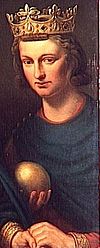 |
Carloman II | 5 August 882 | 6 December 884 | • Son of Louis II the Stammerer
• Younger brother of Louis III |
King of the Franks |
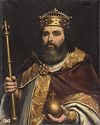 |
Charles the Fat | 20 May 885 | 13 January 888 | • Son of Louis II the German • Cousin of Louis III and Carloman II • Grandson of Louis I the Pious |
King of the Franks Emperor of the Romans (881–88) |
Robertian dynasty (888–898)
The Robertians were Frankish noblemen owing fealty to the Carolingians, and ancestors of the subsequent Capetian dynasty. Odo (Eudes), Count of Paris, was chosen by the western Franks to be their king following the removal of emperor Charles the Fat. He was crowned at Compiègne in February 888 by Walter, Archbishop of Sens.[6]
| Portrait | Name | King from | King until | Relationship with predecessor(s) | Title |
|---|---|---|---|---|---|
 |
Odo of Paris (Eudes) |
29 February 888 | 1 January 898 | • Son of Robert the Strong (Robertians) • Elected king against young Charles III. • Third Cousin of Louis II |
King of the Franks |
Carolingian dynasty (898–922)
Charles, the posthumous son of Louis II, was crowned by a faction opposed to the Robertian Odo at Reims Cathedral in 893, though he only became the effectual monarch with the death of Odo in 898.[7] He was deposed and died in captivity.
| Portrait | Name | King from | King until | Relationship with predecessor(s) | Title |
|---|---|---|---|---|---|
 |
Charles III or Charles the Simple | 28 January 898 | 30 June 922 | • Posthumous son of Louis II • Younger half-brother of Louis III and Carloman II |
King of the Franks |
Robertian dynasty (922–923)
| Portrait | Name | King from | King until | Relationship with predecessor(s) | Title |
|---|---|---|---|---|---|
 |
Robert I | 30 June 922 | 15 June 923 | • Son of Robert the Strong (Robertians) • Younger brother of Odo • Third cousin of Louis the Stammerer |
King of the Franks |
Bosonid dynasty (923–936)
The Bosonids were a noble family descended from Boso the Elder. A member of the family, Rudolph (Raoul), was elected "King of the Franks" in 923.
| Portrait | Name | King from | King until | Relationship with predecessor(s) | Title |
|---|---|---|---|---|---|
 |
Rudolph (Raoul) |
13 July 923 | 14 January 936 | • Son of Richard, Duke of Burgundy (Bosonids) • Son-in-law of Robert I |
King of the Franks |
Carolingian dynasty (936–987)
| Portrait | Name | King from | King until | Relationship with predecessor(s) | Title |
|---|---|---|---|---|---|
 |
Louis IV of Outremer | 19 June 936 | 10 September 954 | • Son of Charles III the Simple | King of the Franks |
 |
Lothair | 12 November 954 | 2 March 986 | • Son of Louis IV | King of the Franks |
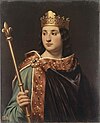 |
Louis V | 8 June 986 | 22 May 987 | • Son of Lothair | King of the Franks |
House of Capet (987–1328)
The main line of descent from Hugh Capet is known as the House of Capet. That line became extinct in 1328, creating a succession crisis known as the Hundred Years War. While there were numerous claimants to succeed, the two best claimants were the House of Valois and the House of Plantagenet and then later the House of Lancaster.
| Portrait | Coat of arms | Name | King from | King until | Relationship with predecessor(s) | Title |
|---|---|---|---|---|---|---|
 |
Hugh Capet | 3 July 987 | 24 October 996 | • Grandson of Robert I | King of the Franks (Roi des Francs) |
|
 |
Robert II the Pious, the Wise | 24 October 996 | 20 July 1031 | • Son of Hugh Capet | ||
 |
Henry I (Henri) |
20 July 1031 | 4 August 1060 | • Son of Robert II | ||
 |
Philip I the Amorous (Philippe) |
4 August 1060 | 29 July 1108 | • Son of Henry I | ||
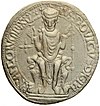 |
Louis VI the Fat | 29 July 1108 | 1 August 1137 | • Son of Philip I | ||
 |
Louis VII the Young | 1 August 1137 | 18 September 1180 | • Son of Louis VI | ||
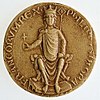 |
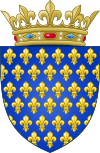 |
Philip II Augustus (Philippe Auguste) |
18 September 1180 | 14 July 1223 | • Son of Louis VII | King of the Franks (Roi des Francs) King of France (Roi de France) |
 |
 |
Louis VIII the Lion | 14 July 1223 | 8 November 1226 | • Son of Philip II Augustus | King of France (Roi de France) |
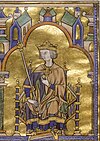 |
 |
Louis IX the Saint (Saint Louis) |
8 November 1226 | 25 August 1270 | • Son of Louis VIII | |
 |
 |
Philip III the Bold (Philippe) |
25 August 1270 | 5 October 1285 | • Son of Louis IX | |
 |
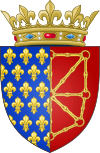 |
Philip IV the Fair, the Iron King (Philippe) |
5 October 1285 | 29 November 1314 | • Son of Philip III | King of France and of Navarre (Roi de France et de Navarre) |
 |
 |
Louis X the Quarreller | 29 November 1314 | 5 June 1316 | • Son of Philip IV | |
 |
 |
John I the Posthumous (Jean) |
15 November 1316 | 20 November 1316 | • Son of Louis X | |
 |
 |
Philip V the Tall (Philippe) |
20 November 1316 | 3 January 1322 | • Son of Philip IV • Younger brother of Louis X |
|
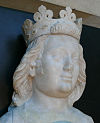 |
 |
Charles IV the Fair | 3 January 1322 | 1 February 1328 | • Son of Philip IV • Younger brother of Louis X and Philip V |
House of Valois (1328–1589)
| Portrait | Coat of arms | Name | King from | King until | Relationship with predecessor(s) | Title |
|---|---|---|---|---|---|---|
 |
 |
Philip VI the Fortunate (Philippe) |
1 April 1328 | 22 August 1350 | • Grandson of Philip III of France | King of France (Roi de France) |
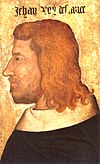 |
 |
John II the Good (Jean) |
22 August 1350 | 8 April 1364 | • Son of Philip VI | King of France (Roi de France) |
 |
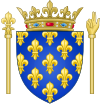 |
Charles V the Wise | 8 April 1364 | 16 September 1380 | • Son of John II | King of France (Roi de France) |
 |
 |
Charles VI the Beloved, the Mad | 16 September 1380 | 21 October 1422 | • Son of Charles V | King of France (Roi de France) |
House of Lancaster (1422–1453)
From 1340 to 1360 and from 1369 to 1801 the Kings of England and Great Britain claimed the title of King of France. Under the terms of the 1420 Treaty of Troyes, Charles VI had recognized his son-in-law Henry V of England as regent and heir. Henry V predeceased Charles VI and so Henry V's son, Henry VI, succeeded his grandfather Charles VI as King of France. Most of Northern France was under English control until 1435 but by 1453 the English had been expelled from all of France save Calais and the Channel Islands. Calais itself fell in 1558. Nevertheless, English and then British monarchs continued to claim the title for themselves until the creation of the United Kingdom in 1801.
| Portrait | Coat of arms | Name | King from | King until | Claim | Title |
|---|---|---|---|---|---|---|
 |
 |
Henry VI of England (Henri VI d'Angleterre) |
21 October 1422 | 19 October 1453 | By right of his father Henry V of England, who by conquest forced the French to sign the Treaty of Troyes became heir and regent of France. Grandson of Charles VI of France. | King of France (Roi de France) |
House of Valois (1328–1589) ...
Conclusion

